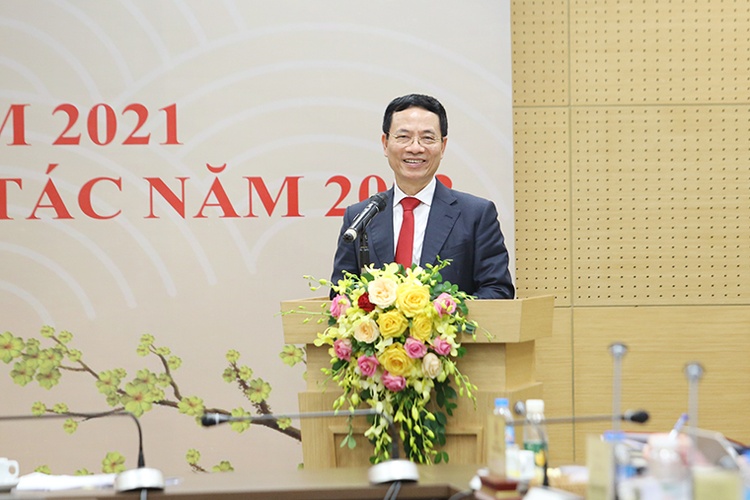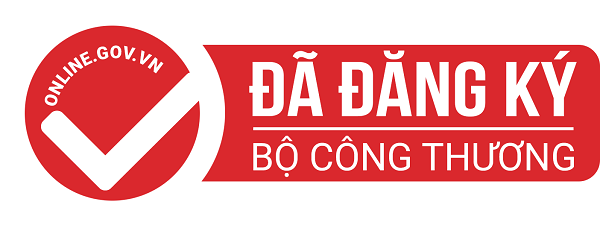Speech by the Minister of Information and Communications on the difference between information technology and digital transformation (03/24/2023)
1. Shifting the focus from the government to the people, from the organization to the people
members, from business to customer. Centralized information technology brings
more value for managers. Serving managers, making things easy for managers
physical. Centralized digital transformation brings value to users, customers,
people. People-centered. Take users, users as
center.
2. Moving from costs to creating benefits and value. Information technology says
How much does it cost, how much does it cost to invest. Many technology projects
Great information in spending a lot of money on houses, machines, software.
Digital transformation is about bringing value and benefits. Convert numbers to focus on hitting
efficient price, value created minus costs is positive. Like a project
invest.
3. Moving from individual software to a shared digital platform. Technology
Information only refers to software. Software is written for a department, a team
organization, a commune, a district, a province. In digital transformation, the concept of background appears
number block. A digital platform is a piece of hardware, a software that is shared by many users
on a provincial, national, and global scale. In addition, digital platforms are not only
It is pure software that solves something, but a working environment.
4. Moving from technology application to transforming the way of working. Technology
Information refers to the application of information technology. It's like a tool.
Information technology provides a tool to automate an old job,
an old way of doing things, an old process. To convert numbers, convert is noun, number is
adjective. Changing the way of doing things is the main, the goal, digital technology is just the method
convenient implementation.
5. Switch from partial to comprehensive. Information technology
then the place to work, the place to not, the one to do the no. The accounting department can do it but the
organization of staff has not yet done. The accounting department does but only does the cost accounting part
fees without making a tax return. Thus, in an organization, there exists the above
computer, one on paper, one in the head. There is no such thing as a comprehensive reflection.
and in the end the paper is still the deciding factor, making information technology a
an added burden, still computer and still paper. Digital transformation is comprehensive,
everywhere, everywhere, there is no longer this so-called half-and-half. There is only one environment
number. Everything will take place in the digital environment. The work of each person who leaves the machine
calculated to not work. And only then will digital technology come into play
fruit.
6. Shift the focus from the chief information officer to the head.
Information technology, technology is a lot, is automating the old, not
changes a lot in the way of doing and operating the organization, so the decisive role is the supervisor
information technology director. If you convert numbers, you will change how you do things, change your ways
Operating the organization is the main, so the leader plays a decisive role. Destroy
the old, put in a new way of doing things, only one person can do it, that is the leader.
The top person who doesn't want to change the way of doing things won't change
number. The leader wants to change the way of doing things, but authorizes the deputy to do it
If you change numbers, there is no conversion.
7. Switch from personal computers to cloud computing. Information technology
are separate information technology systems, one for each commune and each district. Head
It is expensive and requires many operators and operators. Digital conversion is shared
on the cloud, invest in one place, operate and exploit in one place, share the whole province,
nationwide. Passing arguments no longer sees the computer systems in each group
office.
8. Switch from investment to rental. In information technology, investors, and
for private use. The commune and district levels invest because they have little money, so they cannot guarantee a system
standard system, there is no expert to operate, so many problems, especially
safety incidents, network security. Private systems should connect and share data
always the problem. The systems are separate so the total investment increases linearly
by the number of clues. After investing, there is no money to operate, so every year
degradation. Digital conversion is rented. Rent like we use cell phone service
a mobile network is a multi-billion dollar investment, but users only pay 60-
70 thousand per month. Use as much, rent as much, flexible increase or decrease according to
If you can, you can't reduce your investment, if you want to increase it, you have to make a new investment
takes years on the procedure.
9. Move from product to service. Information technology is buying hardware,
software to use, ie buy products. A purchased product can be used
not at full capacity, so wasteful. Statistics show that computers buy less
when 20% capacity is used. When you buy products, you have to spend money and work to raise them
live product. Digital transformation is not buying products but buying services, paying
money by month, by year. It is a recurring expense. How much is the service?
pay as much. No worries about feeding the service.
10. Shifting focus from technology experts group to digital technology team
community. Information technology focuses on techniques, technology, focuses on
How to do, in making information technology systems, so that is often established
technology expert group. Digital transformation focuses on use, focuses on
users know how to install and use, especially people. That's why we need teams
community digital technology in each village, going from house to house to guide people on how to use
digital platform. These digital platforms are developed by technology businesses
make and maintain.
11. Shift from focusing on how to what to do. Technology
information or focus on how. Therefore, it is very difficult for leaders to be greedy
family. The director of information technology says this can't be done, the leader
bear it too. That's why leaders often stay on the sidelines. Transfer
If the number changes, the leader says what he wants, what needs to be done, what needs to be changed, and then
It's the technician's job. New generation information technology, also known as technology
Digital technology has enough power to do most of the requirements of leaders. So that
The leader is at the center.
12. Shift the focus from software people to good users
use. Information technology focuses on software writers. Focus on going
Find someone who is good at software. User-centric digital transformation. Focus on
problem-solving, into use from the very beginning of development, and
contribute to intelligent software gradually. Smart software is the ultimate goal
Finally, and to do this it makes sense to contribute user knowledge
decision. Great users make great software. Leader
must be an excellent user.
13. Moving from information technology system to digital environment. System
Information technology is a technical system. Information technology is building systems
technical system. Digital environment is living and working environment. Number conversion is
create a new living and working environment. The environment is much broader than that
with technical systems.
14. Moving from automation to intelligence. Information Technology Notes
focus on automating work, replacing manual labor, replacing people. Digital conversion
focus on supporting to make people smarter. Helping people make decisions
More data-driven, smarter, with no emphasis on substitutions.
15. Move from organizational data to user data. Information technology
organization's data processing. Digital transformation of user data collection and processing
born daily to optimize operations.
16. Convert from structured data to unstructured data. Technology
information collection and processing structured data, predefined data, is
old knowledge. Information technology focuses on automating the old. Not born
new knowledge. Digital transformation collects and processes both unstructured, analytical data
new data to generate new knowledge. Digital transformation focuses on creating
new knowledge, creating new values.
17. Switching from information technology to information technology +. Technology
Information is information technology. Digital transformation is information technology + Digitization
Comprehensive + Data + Innovation + Digital Technology.




